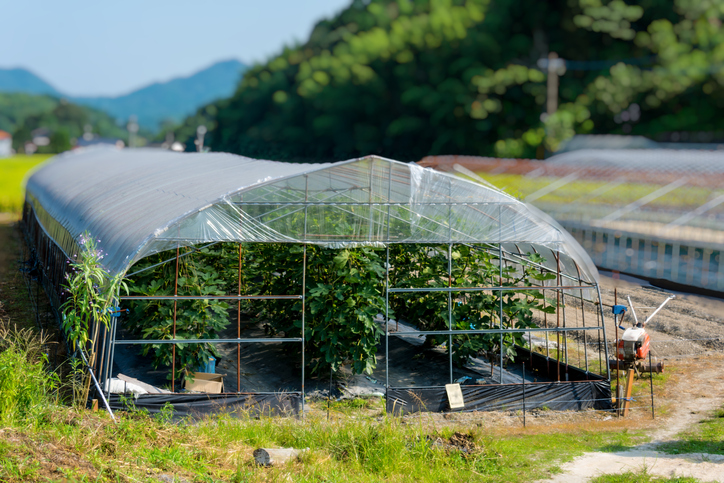
Greenhouse farming is the agricultural practice of growing crops in sheltered structures covered by transparent material such as glass or plastic sheeting. Greenhouses allow crops to adapt to different growing conditions and protect them from severe weather and pests. This is increasingly important now as the world grapples with a future of climate uncertainty.
The benefits of greenhouse farming
Climate change is one of the many factors that drive greenhouse farming around the world, but there are many other advantages that have drawn farmers to greenhouses over the years. In addition to being environmentally-friendly, a controlled environment is highly efficient in reducing the usage of water and other resources like fertilizer or pesticides. Fewer resources and treatments help farmers save costs while creating healthier produce for consumption. Crops are able to thrive in any kind of weather through climate-controlled greenhouses. External conditions like weather and location won’t affect operations. Greenhouse farming makes it possible to enjoy year-round plant production and profits.
Setting up your business
Two of the biggest barriers to entry are obtaining the land required to build a greenhouse and the costs of construction and equipment. Thankfully, this process is made easier with government-subsidized loans and grants to assist potential farmers on both fronts. And once you’ve secured your land and funding, be sure to take advantage of the various classes at your local agricultural technology centers.
In order to set up a greenhouse business, you will first need to register for a business license and permit. Having a registered farm business will qualify you for government loans and support, which is allocated by the Ministry of Agriculture, Food, and Rural Affairs (농림축산식품부), but usually managed by a range of local and regional offices and agricultural support centers and cooperatives like Nonghyup. Because greenhouse farming-related aid is not always centralized, it’s important to check with your regional office and agricultural technology and support center at the beginning of each year when budgets and programs are announced.
Government programs vary and renew year by year, and have various qualifications based on gender, age, location, and land ownership. In addition to government support, you’ll also find corporations like TYM offering generous programs and donations in an effort to foster a more diverse and inclusive farming community.
Setting up your greenhouse
Your needs will vary drastically depending on your location, type of structure, and the level of technology that’s incorporated into your greenhouse. If you need some guidance in planning and designing your greenhouse, the Rural Development Administration (농촌진흥청) provides a helpful program to get you started. As you start planning, here are some basics to get started with greenhouse farming.
• Structure: Greenhouse structures come in all sizes and budgets. Whether low-tech or high-tech, all greenhouses include structural components of varying durability. PVC pipes or galvanized poles? Glass panels or plastic coverings? While the basic structure is generally a one-time investment, it’s important to consider future upkeep and maintenance in your operational budget. In Korea, polyethylene (PE) greenhouses are the most common and cost-efficient. Another advantage of plastic greenhouses is that they also qualify for government subsidies should you need to replace torn or damaged film in the future.
• Equipment: Aside from structural needs, you will need your typical farming essentials like seedlings and fertilizer, as well as control systems for smooth crop production year-round. Equipment that plays a crucial role in greenhouses includes irrigation systems, hot air generators, screens, extractor fans, air circulation fans, and plant and environment monitoring devices.
• Machinery: Depending on the size and needs of your greenhouse, you may also need a suitable tractor to do the heavy lifting. compact tractor like the TYM T60 or with excellent maneuverability, lower height, and compact frame makes it ideal and efficient for enclosed greenhouses.
While there may not be one immediate solution to climate change, one thing that individual growers can do now is to adapt. As farmers consider how their business may evolve in the face of unpredictable weather, transitioning to greenhouses remains one of the most accessible and attractive solutions widely available on the market.
To find out more about how TYM tractors can support your greenhouse operations of all sizes, and to see our range of tractors suited for greenhouse farming, visit our interactive 3D world where you can see our subcompact tractors in action and configure them to your needs.